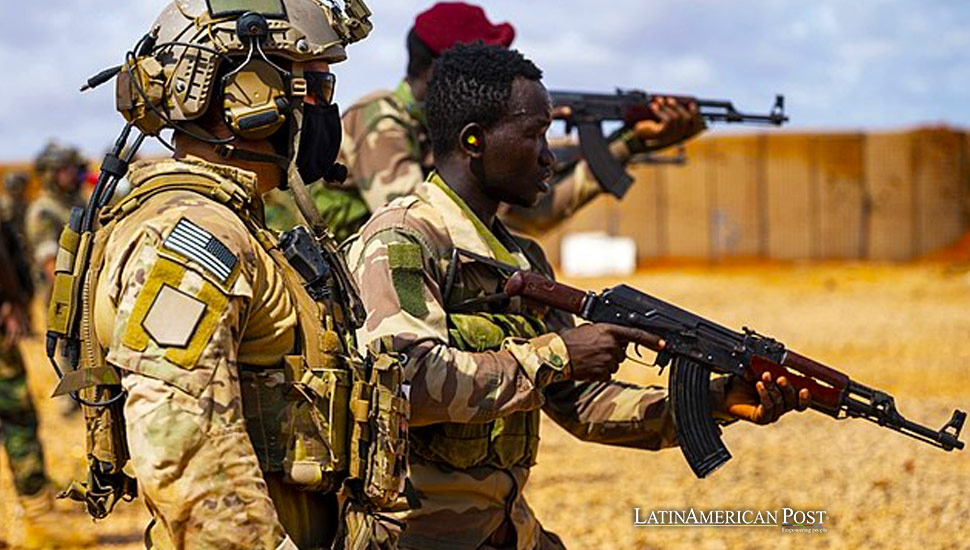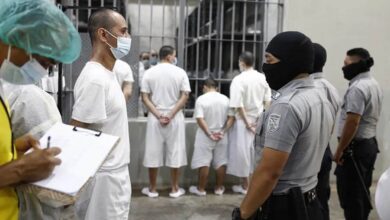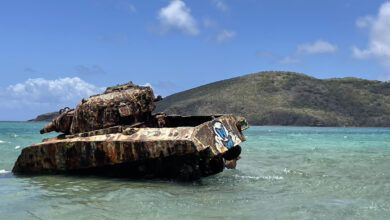Joint US-Mexico Military Drill Enhances Disaster Response Coordination

The US and Mexican armies conducted a joint civil protection drill in Ciudad Juárez, enhancing disaster response coordination across the border. The exercise simulated a significant earthquake, fostering cooperation and improving emergency response strategies.
On Tuesday, the US Army crossed the border into Ciudad Juárez to participate in a joint civil protection drill with the Mexican Army. The exercise, which took place at the Benito Juárez Olympic Stadium, involved military personnel, firefighters, and rescue teams from both nations. The goal was to enhance coordination and preparedness for disaster response along the border.
In a dramatic display, military helicopters from both countries landed four times in the stadium, simulating a disaster scenario that necessitated the rescue of at least a dozen “injured” individuals. The operation, dubbed ‘Fuerzas Amigas 2024,’ incorporated Mexico’s Plan DN-III for armed forces emergency response and the US Defense Support of Civil Authorities (DSCA) plan.
Over 500 participants participated in the drill, including military personnel, firefighters, and rescuers from the Red Cross and other government agencies. The primary scenario involved a hypothetical 7.5-magnitude earthquake affecting both sides of the border, causing service collapses and the stadium’s destruction.
The scenario envisioned during the exercise was a catastrophic earthquake with widespread consequences. The simulation included the destruction of the stadium, chemical leaks, a crisis at Juárez airport, and a derailed train carrying toxic waste. These elements created a complex, multi-faceted emergency requiring high coordination between the US and Mexican forces.
“The purpose is to improve our work. It’s the first time we take this exercise out of the barracks, and the additional goal is to enhance civil protection culture,” said General Rubén Zamudio, commander of the Mexican Fifth Military Zone. He emphasized that the drill was successful due to the complete coordination among all participating entities.
The successful completion of the exercise demonstrated the effectiveness of international cooperation in disaster response. “The teams are working perfectly. I believe we will continue to conduct these exercises annually for the benefit of the community,” added General Zamudio.
US Brigadier General Tomika Seaberry highlighted the importance of these joint efforts. “It’s always important to say that the US Army values its allies. The Mexican Army is an ally and a friend,” stated General Seaberry, commander of the US Army North’s Fourth Sustainment Command (Expeditionary).
Overcoming Language and System Barriers
One of the significant challenges during the drill was the difference in systems and languages between the US and Mexican teams. Despite these barriers, the teams successfully coordinated efforts to extinguish fires, evacuate the injured by land and air, and provide medical assistance on the field and in the stands.
“Thank you to our allies for inviting us to help and assist. We are here to support each other,” General Seaberry added, reinforcing the spirit of cooperation between the two nations.
The drill comes during heightened political tension regarding US-Mexico military relations. In the United States, the Republican Party has proposed deploying troops to combat Mexican drug cartels, a suggestion that has sparked controversy in Mexico. This exercise, however, focused on fostering positive cooperation and mutual support in disaster scenarios, highlighting the potential benefits of such collaboration.
Strengthening Regional Preparedness
The ‘Fuerzas Amigas 2024’ drill is crucial in strengthening regional disaster preparedness. The exercise allowed US and Mexican forces to test and refine their emergency response protocols by simulating a major cross-border disaster. The realistic scenario involving a large-scale earthquake and multiple secondary crises provided a comprehensive test of the capabilities and readiness of the involved parties.
In Latin America, where natural disasters such as earthquakes, hurricanes, and volcanic eruptions are common, the importance of international cooperation in disaster response cannot be overstated. Rapidly and effectively responding to such events can save lives and mitigate damage. The joint drill between the US and Mexico serves as a model for other countries in the region, demonstrating the value of collaborative efforts in enhancing disaster resilience.
For Mexico, the exercise also underscores the importance of maintaining a well-prepared and coordinated response system capable of dealing with large-scale emergencies. The lessons learned from this drill can be applied to other regions within the country, improving overall national disaster response strategies.
The successful execution of the ‘Fuerzas Amigas 2024’ drill marks a significant milestone in US-Mexico military cooperation. It highlights the benefits of joint training and the importance of maintaining solid alliances to address shared challenges. Moving forward, such exercises should be continued and expanded to include more scenarios and involve additional agencies and countries.
For both nations, the drill also provides an opportunity to reflect on areas for improvement. Regular evaluations and updates to disaster response plans based on the outcomes of these exercises will ensure that both countries remain prepared for future emergencies.
Also read: Drug Use in Mexico Increases Risk of Visual Impairment
The joint civil protection drill in Ciudad Juárez exemplifies the power of international collaboration in disaster response. By working together, the US and Mexican forces have demonstrated their commitment to protecting their citizens and enhancing regional resilience. As natural disasters pose significant risks, cooperative efforts will be crucial in safeguarding lives and infrastructure across borders. The lessons learned from ‘Fuerzas Amigas 2024’ will undoubtedly contribute to more effective and coordinated disaster response efforts in the future, setting a precedent for other nations to follow.





